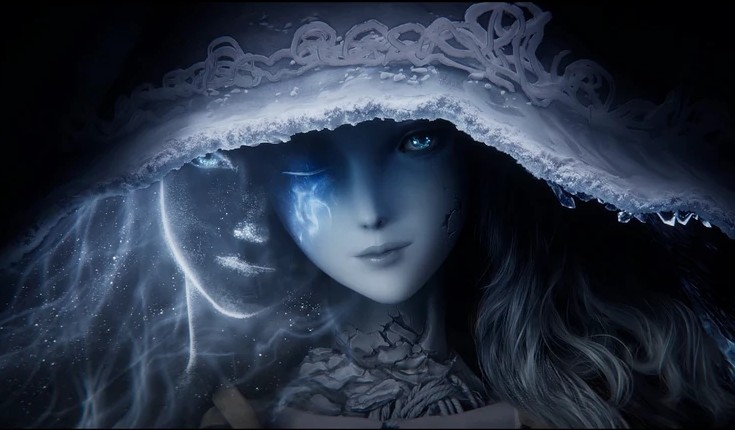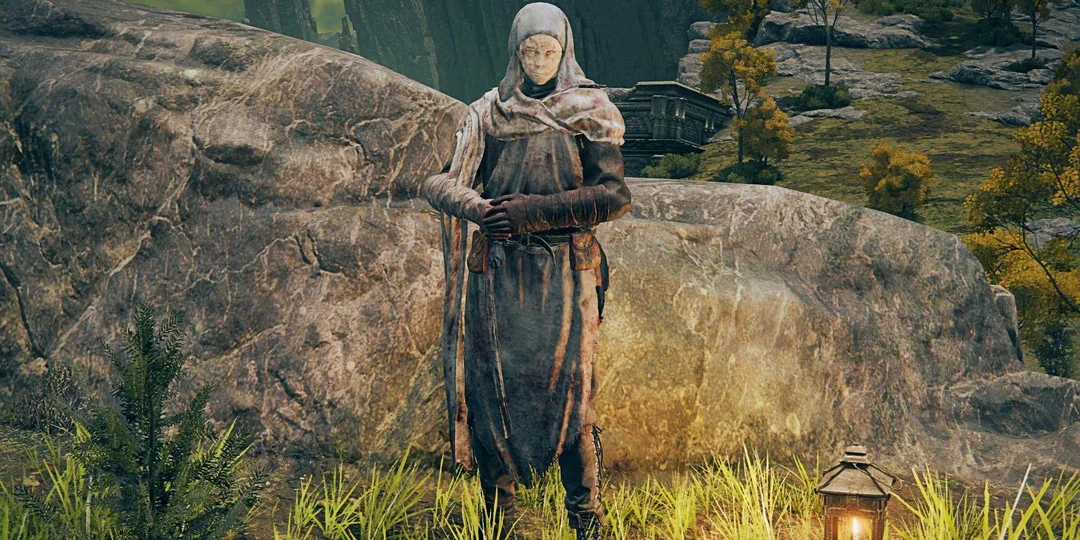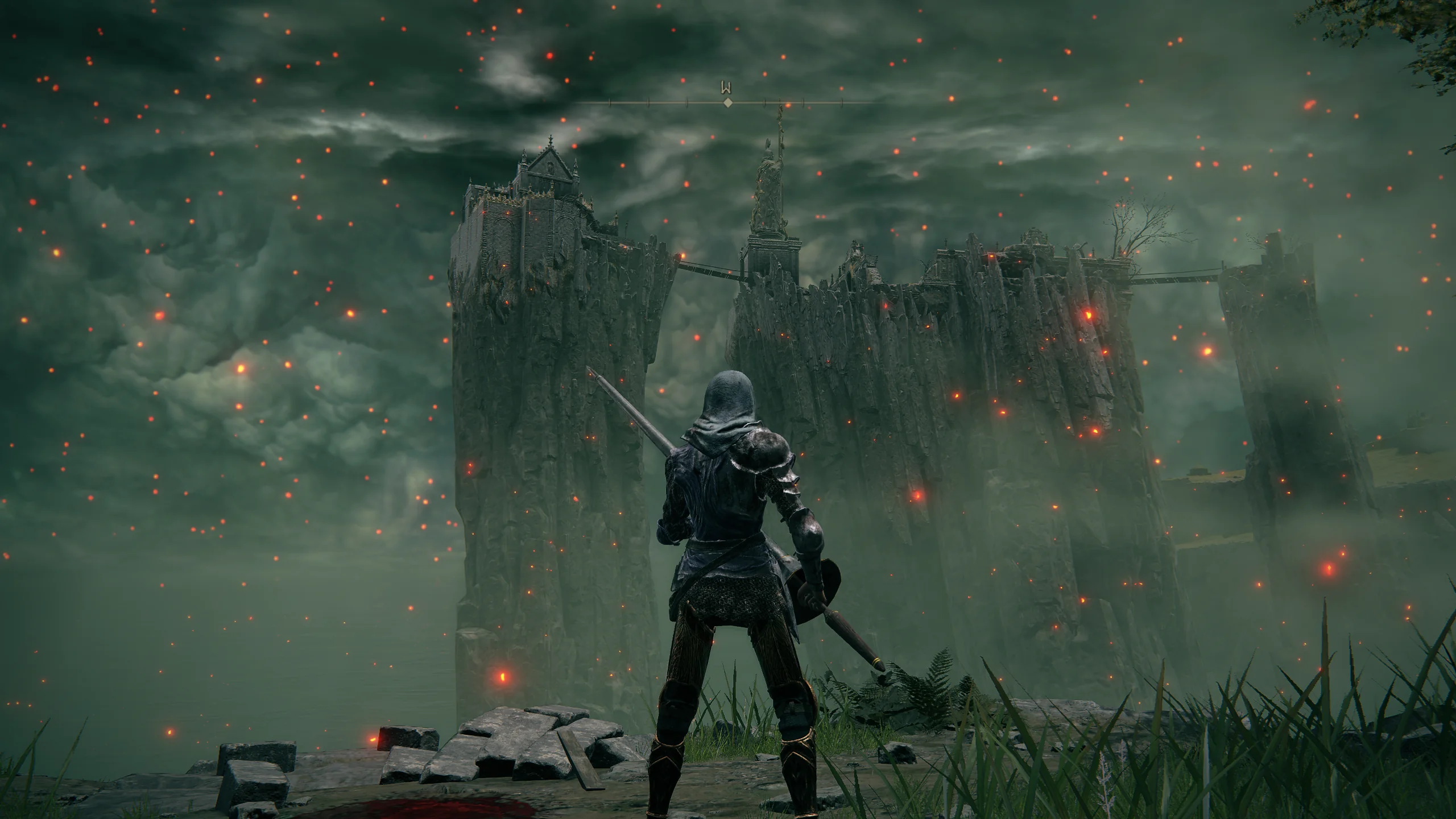· Elden Ring · 12 min read
Ranni the Witch: Elden Ring's Enigmatic Sorceress and Everyone's Waifu
Born from the union of Radagon and Rennala, Ranni the Witch's life is marked by her unique status as an Empyrean, her involvement in the pivotal Night of Black Knives, and her quest to establish a new order under the stars and moon.

Ranni’s tale is one of rebellion, transformation, and the relentless pursuit of autonomy, making her a pivotal figure in the Lands Between. Through her actions, motivations, and interactions with players, Ranni weaves a narrative that challenges fate and invites players into a journey of cosmic significance.
Ranni’s Lore Overview
Ranni the Witch, a pivotal figure in Elden Ring’s intricate lore, is a character of immense depth and complexity. Born to Radagon and Rennala, she is part of a lineage intertwined with the divine, as her father Radagon left to become the consort of Queen Marika. This union elevated Ranni and her siblings to the status of demigods, but Ranni’s destiny was distinct. Unlike her siblings, she was chosen by the Two Fingers as a potential successor to Queen Marika, granting her the esteemed status of an Empyrean. This selection bestowed upon her a shadow, Blaidd, symbolizing her elevated role in the cosmic order.
Ranni’s lore is further enriched by her orchestration of the Night of Black Knives, a pivotal event where the Rune of Death was stolen, and Godwyn the Golden was murdered. This act coincided with Ranni’s own transformation, as she abandoned her original body to inhabit a doll, modeled after her mentor, the snowy crone. Her quest for the hidden treasure of Nokron is supported by her loyal followers, including War Counselor Iji, Preceptor Seluvis, and her shadow Blaidd, alongside the Tarnished player.

Ranni’s actions and motivations are deeply intertwined with the celestial, as her Great Rune is said to be etched upon the moon, reflecting her desire to forge an order not of gold but of the stars and moon. Her narrative is one of rebellion against predetermined fate, as she seeks a path beyond the constraints of the Erdtree’s influence, carving out a new order under the wisdom of the moon.
Are Ranni and Renna the Same Person?

Ranni’s introduction as Renna at the Church of Elleh is a deliberate choice that underscores her enigmatic nature and strategic acumen. This dual identity serves as a protective guise, allowing her to assess the Tarnished without revealing her true intentions prematurely. By initially presenting herself as Renna, Ranni creates a layer of mystery, distancing herself from her true identity and the weight of her lineage as the daughter of Radagon and Rennala. This calculated deception suggests a character who is cautious and has a penchant for manipulation, reflecting her significant involvement in events like The Night of Black Knives.
The implications of Ranni’s dual identity are profound in her questline and interactions with the player. As Renna, she bestows the Spirit Calling Bell and Lone Wolf Ashes, subtly guiding the Tarnished on a path aligned with her goals. This duality allows her to operate under the radar, orchestrating events from behind the scenes without the immediate burden of her reputation as an Empyrean. It also hints at her distrust of the Two Fingers and the established order, as she seeks those who might share her vision of a new age. The transformation from Renna to Ranni is a pivotal moment that deepens the player’s engagement with her quest, revealing layers of complexity in her character and the unfolding narrative of Elden Ring.
How Old is Ranni?
Ranni’s age in the world of Elden Ring is not explicitly stated, but clues within the lore help to estimate her age. As the daughter of Radagon and Rennala, Ranni was elevated to demigod status alongside her siblings, General Radahn and Praetor Rykard, when Radagon became the consort to Queen Marika. This timeline places Ranni’s birth prior to Radagon’s departure from Rennala, a significant historical event in the Lands Between.
Given that Ranni was involved in The Night of Black Knives, a pivotal moment where a fragment of the Rune of Death was stolen and Godwyn the Golden was murdered, it is implied that she has existed for a considerable span of time. Her involvement in such ancient events suggests that Ranni is centuries, if not millennia, old.
Ranni’s age relative to other characters, such as her siblings and the Tarnished, underscores her wisdom and the weight of her past, which influence her quest and her interactions with those who choose to serve her. Her longevity and the events she has witnessed position her as a pivotal figure in the narrative of Elden Ring.
Why Did Ranni Become a Doll?

Ranni’s transformation into a doll was a consequence of her involvement in the events of The Night of Black Knives. During this fateful night, Ranni willingly sacrificed her own body, a decision that intertwined with her ambitious plans to challenge the existing order. Her body was slain alongside Godwyn’s soul in an attempt to defy the Two Fingers and the Golden Order. This act of rebellion led her to bind her soul to a life-sized doll, modeled after her mentor, the snowy crone known for her mastery of cold sorceries. This transformation allowed Ranni to continue her quest for a new order, one shaped by the stars and moon of the chill night, far removed from the Earth and its binding certainties.
The shift from her original corporeal form to a doll had profound implications for Ranni’s interactions and abilities. As a spirit inhabiting an artificial body, she retained her influence over her loyal followers, such as Blaidd and Iji, and continued to manipulate events from the shadows. Her doll form distanced her from the physical limitations of the mortal realm, enabling her to pursue her celestial ambitions unencumbered by earthly constraints. This transformation also underscored her detachment from conventional emotions and physical sensations, aligning with her vision of an order where sight, emotion, faith, and touch become impossibilities. Thus, Ranni’s existence as a doll became both a symbol of her defiance and a vessel for her quest to transcend the world she once knew.
Why Ranni Stole the Rune of Death
Ranni’s theft of the Rune of Death is pivotal, intertwining with her ambition to sever ties with the Greater Will and the Two Fingers, seeking autonomy in a world governed by predetermined fate. By acquiring a fragment of the Rune of Death, Ranni orchestrates the first recorded death of a demigod, Godwyn the Golden, during The Night of Black Knives. This event defies the natural order upheld by the Golden Order and sets the stage for her own transcendence. In the lore, this theft disrupts the established balance, introducing chaos and uncertainty that Ranni exploits to carve out her path.
The implications ripple across the Lands Between, catalyzing events that destabilize the Golden Order and unsettle power dynamics among the demigods. The fragmentation of the cursemark into two half-wheels, one tied to Ranni, reflects the dual nature of her motives—personal and strategic. By wielding the power of death, Ranni gains leverage over her destiny, challenging the fate imposed upon her lineage. This rebellion advances her quest for independence and signals her willingness to embrace the dark and occult, aligning with forces that defy the conventional doctrines of her world.
Why Did Ranni Kill Godwyn?
Ranni’s orchestration of Godwyn’s murder during The Night of Black Knives is steeped in both strategic and deeply personal motivations. It is a critical juncture in her quest for autonomy from the Two Fingers. Godwyn, the eldest known son of Marika and Godfrey, was a symbol of the Golden Order’s established power and a potential Elden Lord, possibly destined to be Ranni’s consort. By targeting Godwyn, Ranni aimed to sever the chains binding her to a predetermined fate dictated by the Greater Will and its emissaries. Killing Godwyn was not merely rebellion but a calculated move to disrupt the divine hierarchy and challenge the inevitability of her role within it.
Strategically, Godwyn’s death was pivotal in inciting chaos, a necessary condition for Ranni to carve out a path of independence. The murder destabilized the Lands Between, setting off events that culminated in the Shattering, fracturing the influence of the Greater Will. On a personal level, choosing Godwyn as her victim might reflect a subversion of the traditional narrative of political marriages among demigods, as suggested by the archetype of an unwillingly betrothed princess. By orchestrating his death, Ranni not only shed her mortal flesh but also symbolically rejected being a pawn in a cosmic game. This action allowed her to embark on her journey, ultimately leading to the Age of Stars, where she envisions an order beyond the reach of the Two Fingers and the constraints of the Golden Order.
Ranni’s Ending Explained
Ranni’s questline in Elden Ring culminates in a transformative vision for the Lands Between, where she seeks to establish the “Age of Stars” as an alternative to the existing order dictated by the Erdtree and the Two Fingers. Unlike the previous chapter, which explored her motivations for orchestrating Godwyn’s murder, this section focuses on the outcome of her journey and the implications of her vision.

Upon completing her questline, players witness Ranni’s profound desire to disconnect the tangible and spiritual certainties of life—sight, emotion, faith, and touch—from the terrestrial realm. Ranni’s order is not of gold, like the Erdtree’s, but of the stars and moon, symbolizing a shift towards the unknown, akin to the age of dark in the Dark Souls series.
The Age of Stars ending signifies a thousand-year voyage under the moon’s wisdom, ushering in an era of fear, doubt, and loneliness as the familiar structures of faith and order are removed. This new age embodies a world where the certainties provided by the Elden Ring’s influence are intentionally distanced, reflecting a transition from a religious to a more scientific or introspective worldview.
By choosing this path, players align with Ranni’s vision of a universe where the true order is indiscernible, echoing the real-world uncertainty and lack of absolute meaning. Thus, Ranni’s ending is not just a narrative conclusion but a philosophical statement, inviting players to embrace a world of mystery and potential, far removed from divine certainties.
Why Players Simp for Ranni

Ranni the Witch captivates players with her intricate character design and enigmatic personality, drawing them into her story within Elden Ring. Her ethereal presence, enveloped in an aura of mystery and strength, is beautifully depicted through her life-sized doll form and striking blue skin, highlighting her otherworldly nature. This visual allure is further enhanced by her multi-layered backstory, where she defies the Greater Will and seeks to carve her own path, resonating with players who admire her independence and defiance against predetermined fate.
Her questline, rich with lore and emotional depth, invites players to become her consort, promising a journey through the Age of Stars, which symbolizes a new beginning under her vision. Ranni’s ability to blend vulnerability with power creates a compelling dichotomy that players find irresistible.
Moreover, Ranni’s interactions with the player character are imbued with an air of intimacy and mutual respect, fostering a connection that extends beyond the typical NPC relationship. Her candid confessions of love for her loyal followers, such as Blaidd and Iji, and her willingness to share her dreams and ambitions with the player, humanize her in a world filled with gods and demigods, making her relatable.
This emotional engagement, combined with her mysterious aura and the promise of an enigmatic future, compels players to “simp” for Ranni, as they find themselves drawn to her charm, complexity, and the promise of a shared destiny under the wisdom of the Moon.
Community Theories About Ranni
Ranni the Witch, a complex and enigmatic figure within the Elden Ring universe, has sparked a multitude of fan theories about her connections and hidden motives. One prominent theory suggests that Ranni, not merely an Empyrean like Malenia and Miquella, was destined to become the next chosen God. This notion is supported by her possession of a shadow, akin to Marika, which the other Empyreans lack. Some fans argue that Ranni’s orchestration of the Night of the Black Knives was a pivotal act to reclaim her fate, marking her as a significant player in the power dynamics of the Elden Ring world. This theory adds depth to Ranni’s character, suggesting her actions are driven by a desire to forge her own destiny amidst the constraints of divine politics.
Further speculation links Ranni to the Gloam-Eyed Queen, with some theorists positing that Ranni’s Empyrean status might be a result of a soul exchange or inheritance from this mysterious figure. The intricate web of relationships surrounding Ranni, including her involvement with Godwyn and her potential ties to the Golden Order through Radagon, enriches her narrative role. These theories not only expand her backstory but also influence how players interpret her motivations and the overarching story.
By engaging with these fan interpretations, players can appreciate the multifaceted nature of Ranni’s character, viewing her not just as a mysterious NPC but as a central figure with profound implications for the game’s lore.
Conclusion
Ranni the Witch’s role in Elden Ring is a philosophical exploration of destiny, autonomy, and the nature of power. Her quest to usher in the Age of Stars represents a profound shift away from the established order, inviting players to ponder the possibilities of a universe unbound by divine certainties. As players engage with her story, they are drawn into a world where mystery and potential reign supreme, reflecting a journey that is as much about self-discovery as it is about the fate of the Lands Between. Ranni’s legacy within the game leaves an indelible mark, challenging players to embrace the unknown and the allure of a shared destiny under the moon’s wisdom.



